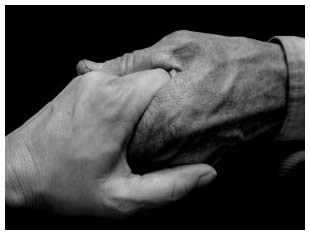 To be a support to a person suffering from Panic Disorder requires understanding and infinite patience. Panic attacks are very frightening ordeals; so frightening that a person will do anything to avoid having one. Panic attacks are beyond the normal experience of everyday anxiety and therefore are difficult for a person who has never experienced one to understand.
To be a support to a person suffering from Panic Disorder requires understanding and infinite patience. Panic attacks are very frightening ordeals; so frightening that a person will do anything to avoid having one. Panic attacks are beyond the normal experience of everyday anxiety and therefore are difficult for a person who has never experienced one to understand.
However, people who suffer from regular panic attacks will voluntarily give up activities that they once enjoyed, such as going to the beach, the movies, even on holiday, just so they can experience peace rather than panic. Often they are forced to give up employment and so then suffer the added burden of financial problems and loss of self-esteem. The symptoms of Panic Disorder have been previously described in What is Panic Disorder?, Panic Disorder: Case Studies, Do you have Panic Disorder with Agoraphobia? and More on Panic Disorder.
Many people fail to understand the pain experienced by sufferers of Panic Disorder and associated conditions and even denigrate them for being the way they are. However, it is important to consider that no-one would give up pleasurable pastimes unless there was a very good reason for it. And the threat of yet another panic attack is sufficient to ruin the life of many a sufferer.
So to be an effective support person, certain personal characteristics are required. The support person must firstly take steps to understand the condition, have a caring and supportive nature, be non-judgmental, and be both positive and patient. These qualities go a long way towards speeding up the recovery process of the phobic person.
The following list contains hints for success in conducting exposure therapy with your friend or family member. Exposure therapy involves slowly exposing the phobic person to the situation that they fear, such as going to a shopping mall.
1. Be clear about what your friend wants to achieve in the session. If they wish to walk around the block, do they want you to use distraction by talking to them, or would they prefer that you remain silent so that they can concentrate on their own positive self-talk. Be clear about this from the outset.
2. Reassure your friend that you will follow their every direction and will not leave them. It is important to repeat this on every occasion as it serves to lower the stress levels prior to beginning the exposure session.
3. Make sure you are familiar with the early signs of anxiety in your friend. They may begin to lose track of the conversation, walk faster, breathe more rapidly, or look distracted. Make sure you ask your friend to tell you when their anxiety is beginning to escalate. Arrange a special signal between you if you are in a social situation and your friend feels uncomfortable about talking about their condition on public.
There are many more tips for supporting your phobic friend during exposure therapy. We will explore these in the next blog.
Contact Beth McHugh for further information or assistance regarding this issue.

